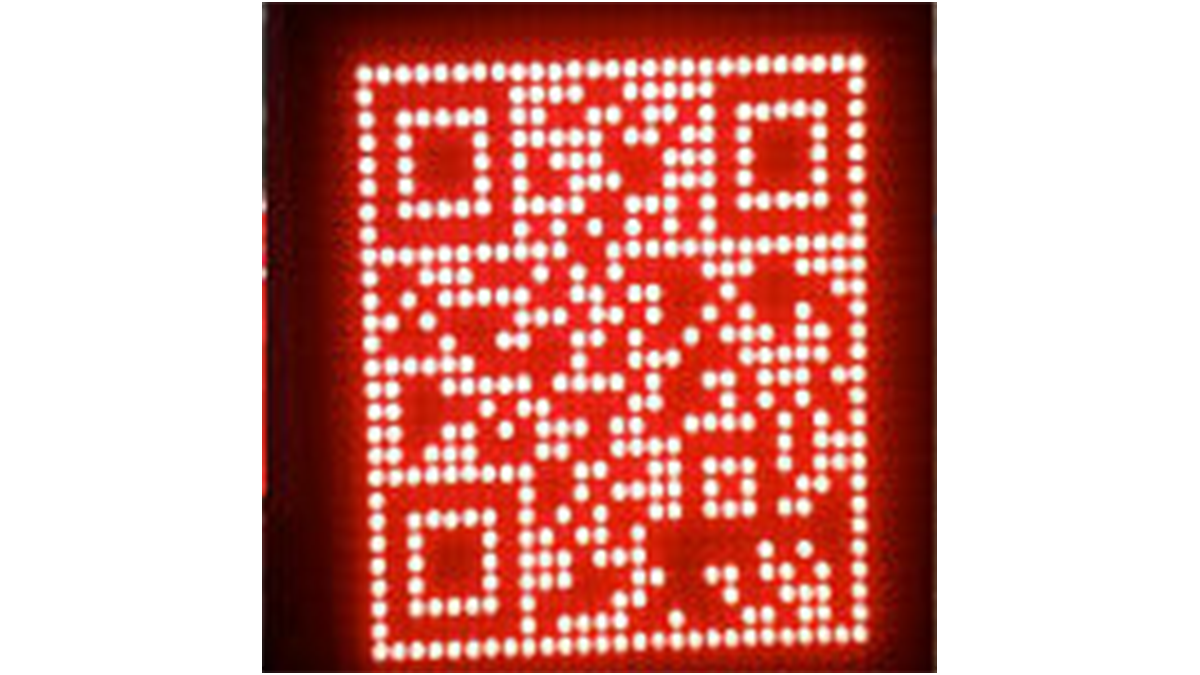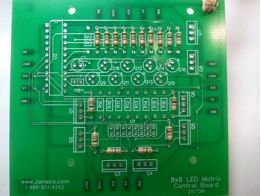QR codes are addicting. Smartphones are smart enough to read them from virtually any angle or orientation. But imagine taking it a step further. I had dreams of a digital LED array that I could program with QR codes, and I wanted it really big!
I used 16 matrices to create the QR code that is pictured here. You may purchase the kit to build an 8×8 panel from Jameco.
LEDs are not included to give you the freedom to choose your own size and color.
Step 1: Requires
Soldering iron and solder
LEDcontrol library
LEDs (10mm recommended)
Wire cutters and strippers
Jumper wire

LED Matrix Kit Includes:
LED Matrix PCB
47 Ω resistors
10μF capacitor
Control Board PCB
150k Ω resistor
0.1μF capacitor
IRF9Z34N transistors
IC socket
Pan head screw, 4-40×3/8″L
2N2222A transistors
2×8 female header
Hex spacer, 4-40×7/16″L
1k Ω resistors
2×8 male header
Hex standoff, 4/40×3/8″
1.5k Ω resistors
MAX7219 IC
Step 2: Install Pin Headers
Temporarily install a few spacers on the control board and stand the board pair on one side so both boards are square to each other. Tighten the spacers. This has an added benefit if you are building multiple matrices. They will all sit nicely flush next to one another.
Step 3: Install the Resistors
R1 – R8 = 1k Ω (brown-black-red)
R9 – R16 = 47 Ω (yellow-violet-black)
R17 – R24 = 1.5k Ω (brown-green-red)
R25 = 150k Ω (brown-green-yellow)
Step 4: Install the Capacitors
C1 = 10μF electrolytic capacitor and is polarized. Note the stripe indicating the negative side. The silkscreen shows a “+” sign for positive. Solder the capacitor with enough space that you can bend the capacitor over to lay flush with the board.
Step 5: Install Transistors
Q9 – Q16 = 2N2222A. Make sure each transistor says 2N2222A. (If it’s something else, it could cause the opposite action to happen once programmed.
Helpful Tip: Solder one lead of each transistor at a time. This holds them in place and allows you to make minor adjustments. It also allows the transistors a brief period to cool before you solder the next lead.
Q1 – Q8 = IRF9Z34N. These transistors must be placed in the correct orientation. The sliver of a rectangle on the silkscreen indicates the backside of the transistor. Bend the leads back 90 degrees so the transistors will lay flat on the PCB when installed. You may also choose to leave a slight gap between the back of the transistor and the PCB for airflow to keep components cool.

